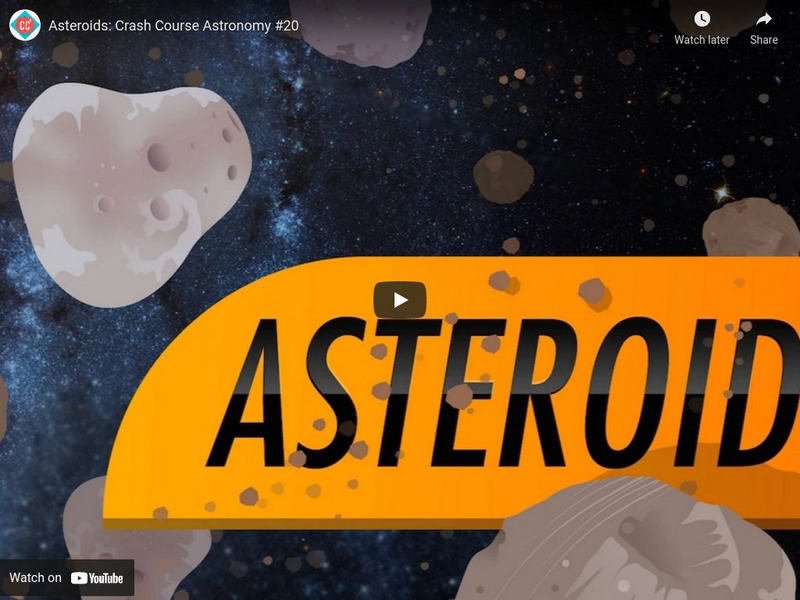Hi, what do you want to do?
Next Animation Studio
NASA Dawn mission: spacecraft takes first image of dwarf planet Ceres
NASA's Dawn spacecraft is currently on its way to the asteroid belt where it will rendezvous Ceres, its largest celestial body. Ceres, also classified as a dwarf planet, has an average diameter of about 950 km (590 miles) making it...
NASA
NASA | Aqua CERES: Tracking Earth's Heat Balance
Is the heat budget of the planet changing? Thermometers on the ground can give us a snapshot of a summer heatwave or winter cold spell, but it takes something like NASA's CERES instruments to give a long term picture of whether the...
Curated Video
Asteroids: Small Rocks with Big Potential Dangers
In this video, we explore the fascinating world of asteroids - small, rocky masses that orbit the sun. While they are too small to be called planets, asteroids can still pose a threat to Earth. Scientists study asteroids to learn about...
Curated Video
Italy, Caserta gardens and nymphaeums
Of all the royal residences inspired by the Palace of Versailles, the Reggia of Caserta is the one that bears the greatest resemblance to the original model: the unbroken balustraded skyline and the slight break provided by pavilions...
NASA
NASA | An Introduction to Aqua
The first in a series of episodes looking at the instruments and applications of the Aqua satellite.
NASA
Young Cryovolcano on Ceres
Analysis of images from NASA's Dawn mission reveals that dwarf planet Ceres hosts an unexpectedly young cryovolcano that formed with the past billion years. Music credits: "Farewell to the King" by Richard Friedman [ASCAP]; Jefandyo...
NASA
Permanent Shadows on Ceres
Permanently shadowed regions capable of accumulating surface ice were identified in the northern hemisphere of Ceres using images taken by NASA’s Dawn mission combined with sophisticated computer modeling of illumination. CREDIT:...
Astrum
Why is Pluto not a planet?
I'm sure most of us grew up with the knowledge that Pluto was our solar system's ninth planet. So what changed about the definition?
Curated Video
Italy, Paestum, Temple of Athena (Ceres)
The Temple of Athena or Temple of Ceres (c. 500 BC) is a Greek temple found at Paestum, built near the so-called Basilica which is much larger than it. It has a high pediment and a Doric frieze, made up of large blocks of limestone. The...
Next Animation Studio
NASA Dawn spacecraft captures first picture of dwarf planet Ceres
NASA's Dawn spacecraft is currently on its way to the asteroid belt where it will eventually meet with Ceres, its largest celestial body. The dwarf planet has an average diameter of about 950 km (590 miles). Dawn captured the first image...
NASA
NASA | Terra@10: Terra's 10th Anniversary
The Earth-observing satellite Terra celebrates its tenth anniversary in 2009. This video highlights how Terra has helped us better understand our home planet. Or get tweeted by NASA:
PBS
Pbs Learning Media: Crash Course Astronomy: Asteroids
Asteroids are chunks of rock or metal, or both, that were once part of a planet, but were destroyed after collisions. Most asteroids orbit the Sun between Mars and Jupiter, but some get near the Earth. The biggest asteroid, Ceres, is far...
Crash Course
Crash Course Astronomy #20: Asteroids
Now that we've finished our tour of the planets, we're headed back to the asteroid belt. Asteroids are chunks of rock, metal, or both that were once part of smallish planets but were destroyed after collisions. Most orbit the Sun between...
SciShow
Sci Show Kids: Meet the 5 Dwarf Planets
A video dedicated to learning about the dwarf planets. Learn that a dwarf planets differs from a regular planet based on its size and its unclear path it takes around the sun. Also get some more details about Haumea, Eris, Pluto, Ceres,...








